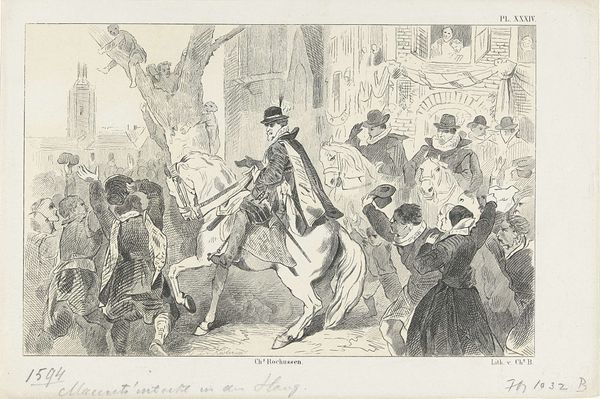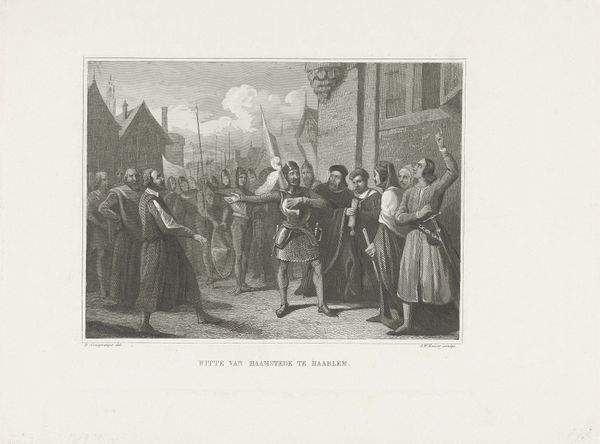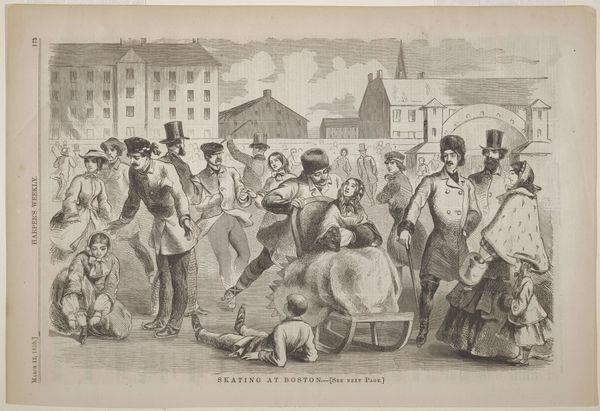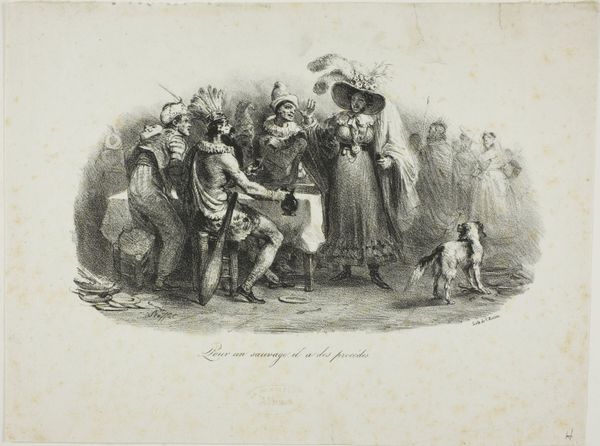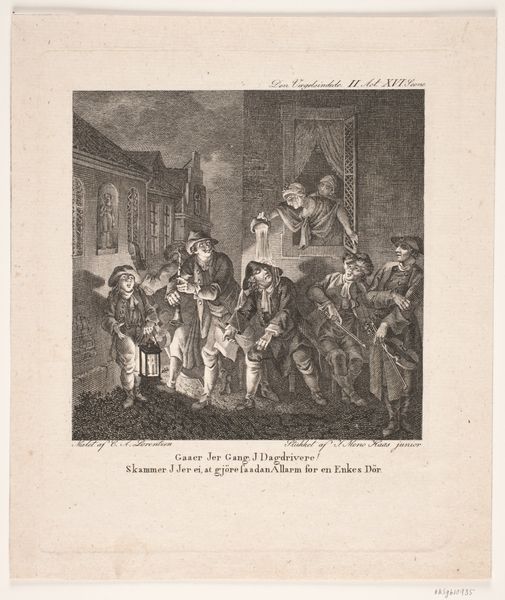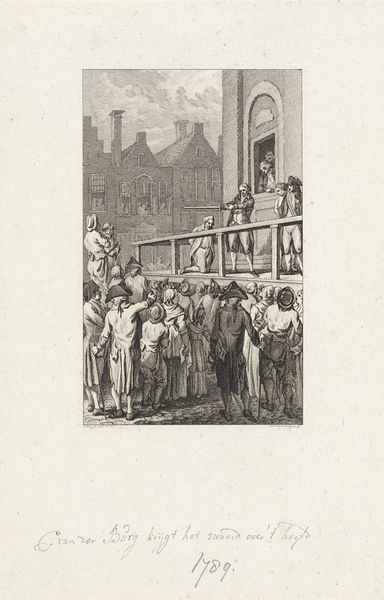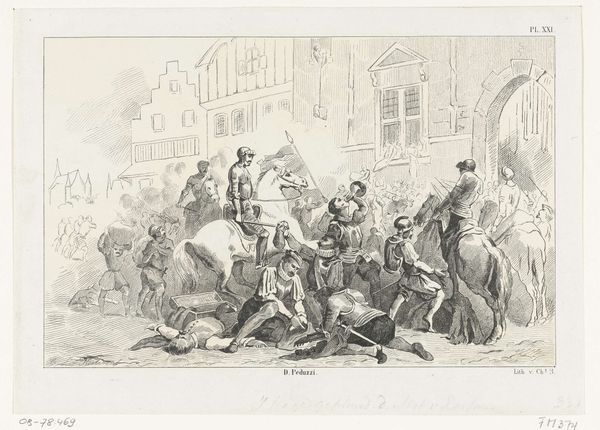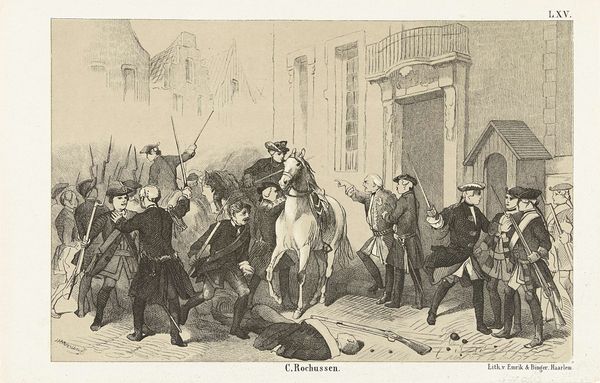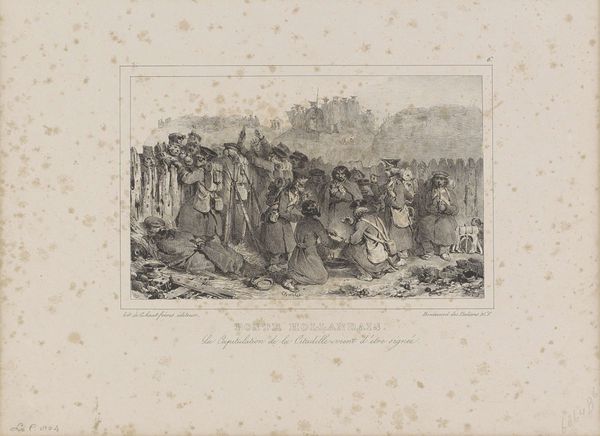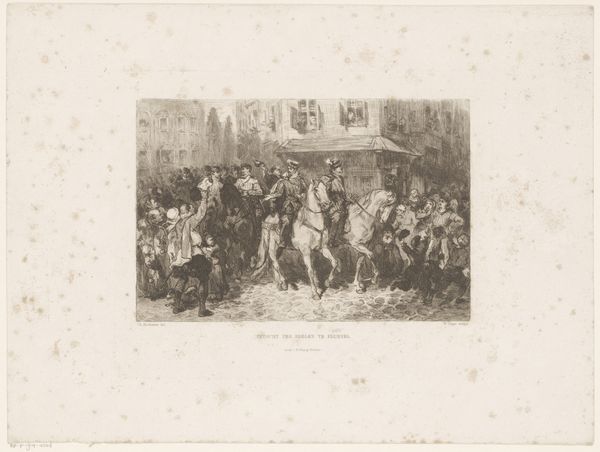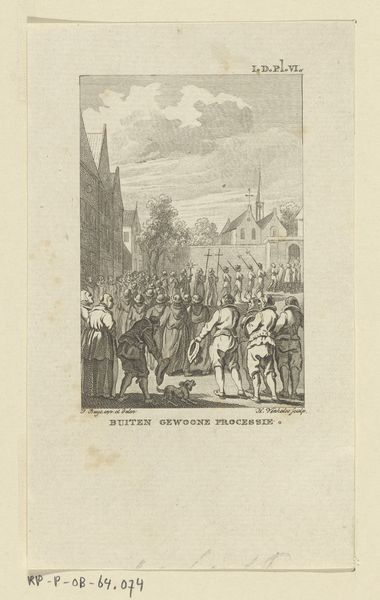
Dimensions: height 165 mm, width 245 mm
Copyright: Rijks Museum: Open Domain
Curator: This engraving, titled "Onthaal van prins Willem III te Amsterdam, 1666," though created between 1853 and 1861, depicts a key moment in Dutch history. It portrays Prince William III's entry into Amsterdam, a pivotal event shaping the political landscape. Editor: It’s interesting that it was made almost two centuries later. At first glance, it feels remarkably detailed for a print. The celebratory mood seems palpable despite the grayscale palette. It's a dense composition; everyone is looking towards one focal point. Curator: Yes, the date of its creation is crucial. This was a period of heightened national identity formation in the Netherlands. The engraving is not just a historical record but a 19th-century interpretation, designed to evoke a particular sentiment regarding the Dutch monarchy. It highlights the role of figures such as William of Orange in fostering national unity and identity. Editor: Look at the way the city itself is presented; it seems more like a backdrop than a vital ingredient. All eyes and labour seems oriented toward this sole, aristocratic individual. I'm curious about the engraver and their place within the system that made the print. It seems more like political messaging than art. Who was the audience, what sort of tools would they have used to make this print, and where was it made? Curator: Prints like these had a broad audience and functioned as a primary medium to circulate political messages and historical narratives. Its circulation in newspapers and public displays solidified collective memory. The cityscape underscores the importance of Amsterdam as a political and commercial center. It portrays not just an event but an idealized image of national unity. Editor: Perhaps that explains the near-photographic detail despite being made with older engraving techniques. It’s interesting how craft intersects with political intent. I can appreciate the artistry and the historical event, yet can't ignore how the means of its creation serves power. Curator: Precisely. Understanding the history allows us to deconstruct the narrative—the making and consumption of this image were equally deliberate. Editor: Absolutely. By understanding both, we have more tools to see clearly what a work can mean, who it was intended for, and what ends it may serve.
Comments
No comments
Be the first to comment and join the conversation on the ultimate creative platform.
